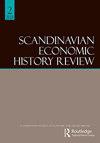金融危机的分配效应:1899-1905年的俄罗斯
IF 1
Q4 ECONOMICS
引用次数: 2
摘要
谁为金融危机买单?本文考察了1899-1902年俄罗斯重大金融危机和1905年俄国革命之间的时期。本文利用新构建的总体层面数据和叙述性证据发现,为了应对危机,俄罗斯政府和行业将收入和财富从普通工人转移到实业家和投资者手中。接受转移支付的企业很好地度过了危机,并在经济复苏期间获利,而雇员的工资和财富却落后了。本文章由计算机程序翻译,如有差异,请以英文原文为准。
The distributional effect of a financial crisis: Russia 1899–1905
ABSTRACT Who pays for financial crises? This paper examines the period between the major Russian financial crisis of 1899–1902 and the Russian Revolution of 1905. Using newly constructed aggregate-level data and narrative evidence, this paper finds that in response to the crisis, the Russian government and industry transferred income and wealth from ordinary workers to industrialists and investors. The recipients of transfers weathered the crisis well and profited during the recovery, while employees’ wages and wealth fell behind.
求助全文
通过发布文献求助,成功后即可免费获取论文全文。
去求助
来源期刊

SCANDINAVIAN ECONOMIC HISTORY REVIEW
ECONOMICS-
CiteScore
1.60
自引率
16.70%
发文量
20
期刊介绍:
Scandinavian Economic History Review publishes articles and reviews in the broad field of Nordic economic, business and social history. The journal also publishes contributions from closely related fields, such as history of technology, maritime history and history of economic thought. Articles dealing with theoretical and methodological issues are also included. The editors aim to reflect contemporary research, thinking and debate in these fields, both within Scandinavia and more widely. The journal comprises a broad variety of aspects and approaches to economic and social history, ranging from macro economic history to business history, from quantitative to qualitative studies.
 求助内容:
求助内容: 应助结果提醒方式:
应助结果提醒方式:


